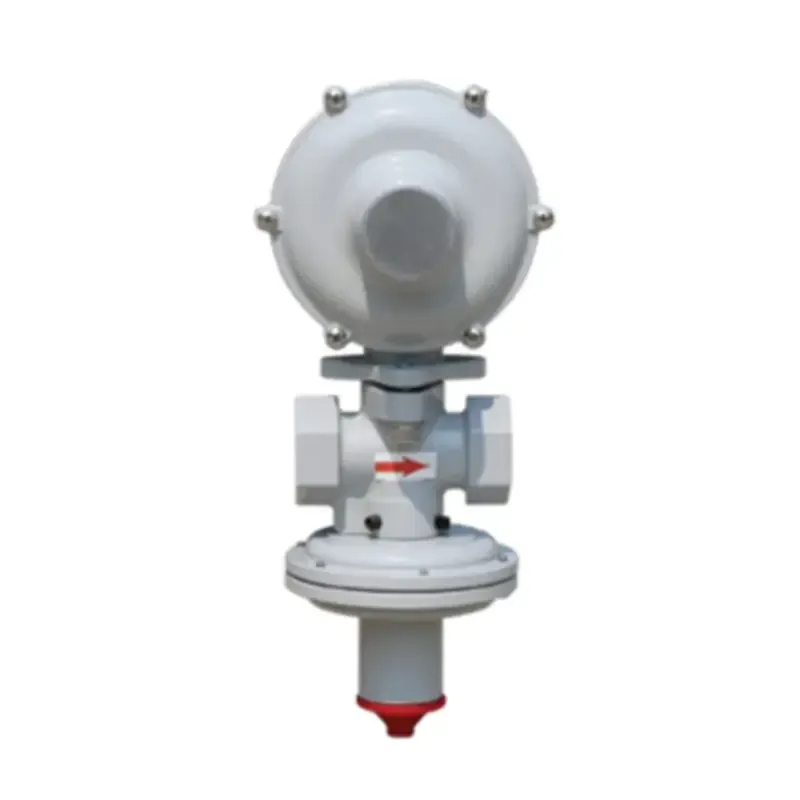
Dec . 12, 2024 20:32
Back to list
Understanding the Functionality and Applications of Pneumatic Control Valves in Automation Systems
Understanding Pneumatic Control Valves An Essential Component in Automation
Pneumatic control valves are crucial components found in various industrial applications where compressed air is the main source of power. They play a significant role in automated systems, controlling the flow and pressure of air in pneumatic machinery, thereby facilitating the movement and operation of various tools and equipment. In this article, we will explore the principles of pneumatic control valves, their functions, types, and applications, as well as considerations for their selection and maintenance.
Principles of Pneumatic Control Valves
At its core, a pneumatic control valve functions by modulating the flow of air within a pneumatic circuit. These valves regulate air pressure and flow rates to achieve precise control of movement in actuators, such as cylinders and motors. By regulating the amount of air entering an actuator, pneumatic control valves ensure that machinery operates at optimal speeds and force levels, preventing damage and increasing efficiency.
The operation of these valves is often controlled by signals from a control system, such as a programmable logic controller (PLC). The PLC sends commands based on inputs from various sensors, allowing for real-time adjustments in response to changing conditions in the system. This integration of pneumatic valves with control systems enables automation and enhances the overall operational efficiency of systems.
Types of Pneumatic Control Valves
Pneumatic control valves come in various types, each tailored for specific applications and functionalities. Some of the most common types include
1. Directional Control Valves These valves determine the path of airflow in a pneumatic system. They can be manually operated or automatically controlled and are essential for directing air to different actuators.
2. Flow Control Valves As the name suggests, these valves regulate the speed of actuators by controlling the flow rate of air. By adjusting the opening of the valve, operators can increase or decrease the speed of a cylinder's movement.
3. Pressure Control Valves These valves maintain a specific pressure level within the system. They can be either relief valves, which release excess pressure, or reducing valves, which lower inlet pressure to a desired level.
pneumatic control valve

4. Solenoid Control Valves These are electrically operated valves that utilize a solenoid to open or close the valve, allowing for precise control over the air flow in automated systems.
Applications of Pneumatic Control Valves
Pneumatic control valves find extensive applications across various industries. In manufacturing, they are used in assembly lines to control the movements of robotic arms and automated conveyors. In the automotive industry, pneumatic systems control tasks such as clamping and paint spraying, ensuring high precision and efficiency.
Moreover, these valves are commonly employed in packaging machines, food and beverage processing, and pharmaceutical production, where they help maintain sanitary conditions and strict operational standards. The versatility and reliability of pneumatic control valves make them indispensable in modern automation.
Selection and Maintenance Considerations
When selecting pneumatic control valves, several factors should be considered. These include the type of application, the required flow and pressure ratings, the fluid compatibility, and the operating environment. Valves must be chosen not only for their capability to meet the operational demands but also for reliability and ease of maintenance.
Regular maintenance is essential to ensure the longevity and functionality of pneumatic control valves. This includes routine checks for wear and tear, ensuring that seals and diaphragms are in good condition, and verifying that the valves are free from contaminants or blockages. Failure to maintain these components can lead to system inefficiencies and increased downtime.
Conclusion
Pneumatic control valves are vital for the successful operation of automated systems across various industries. Understanding their principles, types, and applications can help in selecting the right valve for specific needs. Additionally, regular maintenance is crucial to ensure these valves perform optimally, minimizing downtime and maximizing productivity. As industries continue to embrace automation, the importance of pneumatic control valves will only grow, solidifying their role as essential components in modern mechanical systems.
Latest news
-
Safety Valve Spring-Loaded Design Overpressure ProtectionNewsJul.25,2025
-
Precision Voltage Regulator AC5 Accuracy Grade PerformanceNewsJul.25,2025
-
Natural Gas Pressure Regulating Skid Industrial Pipeline ApplicationsNewsJul.25,2025
-
Natural Gas Filter Stainless Steel Mesh Element DesignNewsJul.25,2025
-
Gas Pressure Regulator Valve Direct-Acting Spring-Loaded DesignNewsJul.25,2025
-
Decompression Equipment Multi-Stage Heat Exchange System DesignNewsJul.25,2025

